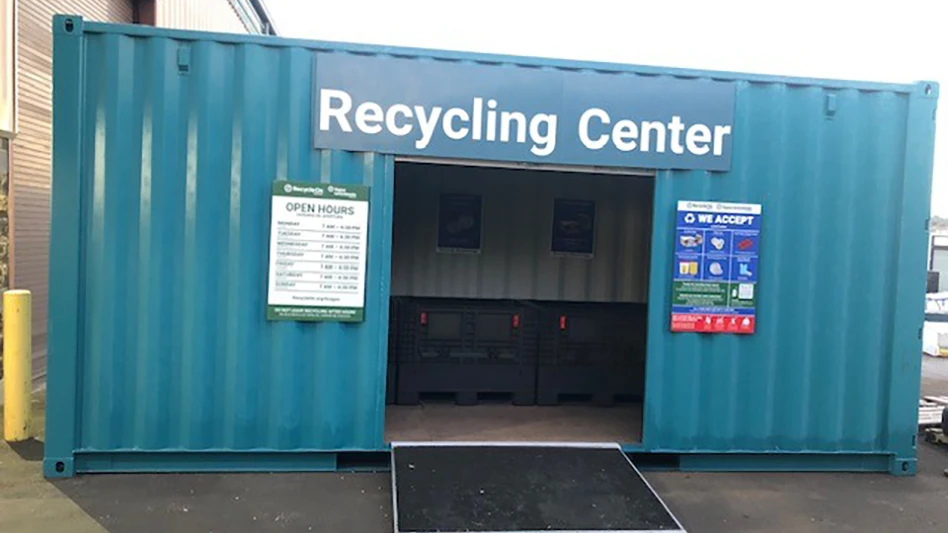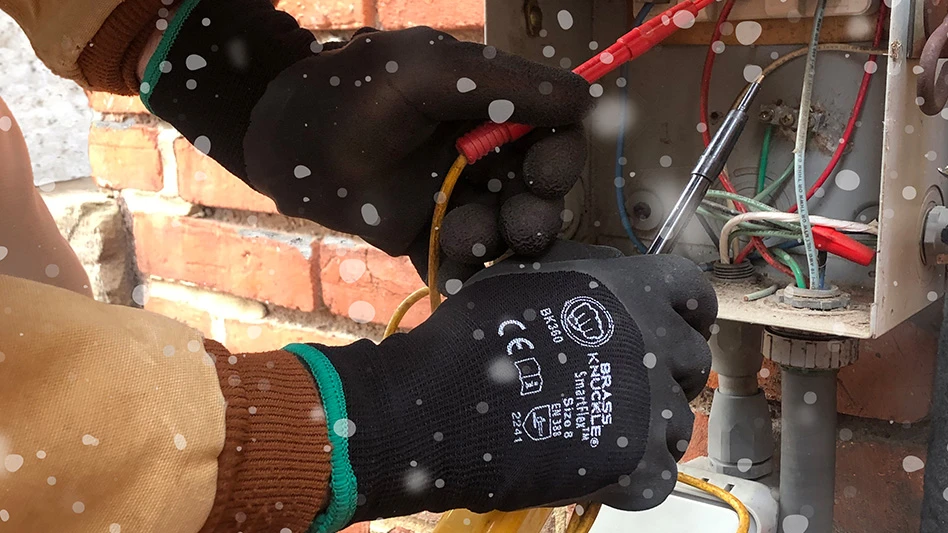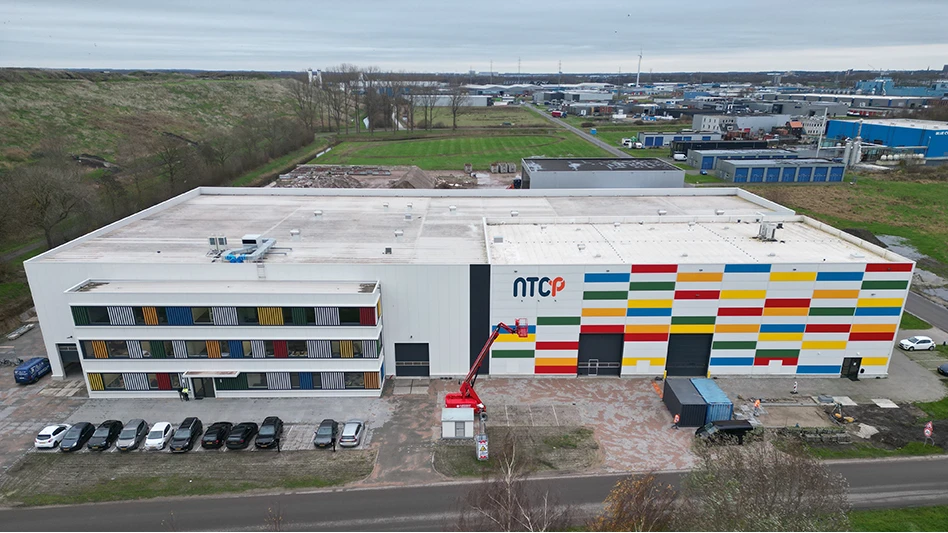 When customers hand over their digital media for storage in a commercial records management facility, they expect their information will be protected and retrieved when required. Whether the racking system allows for slot or case storage, the two general racking options used in media vaults, security is always of upmost importance.
When customers hand over their digital media for storage in a commercial records management facility, they expect their information will be protected and retrieved when required. Whether the racking system allows for slot or case storage, the two general racking options used in media vaults, security is always of upmost importance.
Hugh Smith, president of Firelock Fireproof Media Vaults, Kutztown, Pennsylvania, says he has seen a trend in the industry of storing increasingly more media, specifically tapes, in locked containers.
Firelock custom designs and manufactures fireproof, room-sized modular vaults for the fire/environmental protection of vital information assets.
Smith says that as concerns grow with regulations such as the Health Insurance Portability and Accountability Act (HIPAA), media vaulting clients do not want anyone looking at their information.
He says, in the past, most companies would present records centers with unlocked containers that held their tapes. Once off site, those tapes were taken out of the container and stored on racks within media vaults. Today, many people who choose to store their media in locked containers are doing so because they perceive this as the more secure option, Hugh states.
Secured storage
What’s driving this push, Smith says, “is more and more people are concerned about HIPAA and PII (personally identifiable information), so they don’t want people looking at those tapes because you could create a data breach.” Tapes have become more valuable, he says, because of the liability associated with a data breach under laws such as HIPAA and the high capacity of these devices.
Locked containers can reduce this risk, he says. Smith adds, “The biggest trend you’re seeing is media vaulting has moved from less secure to more secure because the value of the data” has increased.
The risk of a data breach is a high concern for companies, according to the “2014 Information Maturity Risk Index,” a study published by storage and information management company Iron Mountain Inc., Boston, and United Kingdom-based PwC UK.
|
Online options While much of the records and information management industry has historically relied on storage racking for electronic media, another storage solution is available to protect data while also allowing the client easy access to its information. Heather Mayer, director of marketing for Qualstar Corp., a Simi Valley, California-based manufacturer specializing in data security and archive storage solutions for digital information, says robotic tape libraries offer nearline storage, which refers to technology that resides between online and offline storage solutions. Mayer explains the capabilities of nearline robotic tape storage:
|
In the study, Iron Mountain and PwC evaluated the information governance programs of 1,800 companies of varying sizes in North America and Europe in four areas: strategy, people, communications and security.
When asked to gauge the importance of securing and protecting information versus tapping into its ability to serve as a business asset, respondents named “avoiding a data breach” (85 percent in North America, 76 percent in Europe) and “avoiding legal action or a fine for noncompliance” (79 percent and 74 percent) as their top priorities for information management.
At the time of the study’s release, Sue Trombley, managing director of thought leadership for Iron Mountain, explained, “With so many regulations and standards, each of which can carry heavy penalties for noncompliance, organizations should be commended for making security and protection top priorities.”
She continued, “The mark of a truly mature information management program comes in finding the right balance of mixing the priorities of security with the needs of the business to use information to improve operations, power innovation, open new markets and drive revenue.”
Sense of space
Joe Malerba, general manager of rack remediation and solutions for Chicago-based REB Storage Systems International, a records storage solutions specialist, says media container storage is not as efficient as slot storage because efficiency is all about density.
For example, some records and information management companies may have 20 media containers stored in their vaults, but these containers may contain only five tapes each, Malerba notes. Those 100 tapes would take up much less space stored in slots.
“I can get a lot more density in a footprint of open slot storage over containers,” Malerba says.
He points out that the records management industry is split 60/40 for open slot storage versus container storage for media, respectively.
Space in media vaults, he says, is a factor that every commercial records management facility operator should consider.
When determining the racking needs for a media vault, Malerba suggests scalability, starting off small and leaving room for growth. “If I fill up the small 10-by-10 [vault] investment and I want to add to it, I can add to it as I go rather than buying a big system I might not need down the road,” he says.
On the other hand, Smith has had personal experience building a 10-by-10 vault for a customer who was unsure about what size facility to start off with and went against Smith’s advice not to start small. A couple of months after Firelock had completed the smaller vault, Smith describes how that customer requested an additional 40 feet.
He says he always asks customers how much media they have to store.
“I always talk about vault size like fingers in a glove. A vault has to fit your media,” Smith says, adding, “so always, when you’re going to talk about storing media, you begin with the media.”
Speaking of space, Smith says numerous companies in the industry are moving toward standardizing the types of containers used for storage.
“The biggest thing that can affect racking is if you buy the wrong rack,” Malerba warns. “The big question is predicting what is coming in. It’s always good to understand what you need first before you purchase it.”
While both plastic and metal containers are used today, Malerba says plastic dominates over metal containers in all records management facilities and cites factors including price, design and weight. He says it has become difficult for facilities to store so many different types of containers.
Storage providers are limiting container size options to two instead of 10 different types, Malerba says. Capacity is another important factor to consider.
“It’s cheap to change out the containers; it’s expensive to change out the shelving,” Smith states.
Certain changes
After security, scalability, density and capacity, Malerba says flexibility is the next essential component of a successful racking system. If a commercial records management facility incorporates only open-slot storage in its system, for example, it is expensive to change it when customers begin requesting media container storage. Therefore, a mix of storage options might be best.
He advises media vault operators to remember that customers come and go, making it best to have flexibility in terms of storage capabilities.
Media vault operators also are not limited to storing tapes, Malerba advises. Other digital media, such as hard drives, can be stored in the vault, and considering those options is valuable, Malerba says.
Another cost-effective option to consider is buying used racking systems for open slot or container storage. Malerba says although the used racking market is drying up as there is less material out there, “it is very, very cheap,” he says.
Potential drawbacks to buying used include being without a warranty and not being able to buy wear parts for the system.
Malerba says media types and sizes will change and storage providers have to be able to adapt as well. He explains how years ago half-inch tape was the standard, then DLT (digital linear tape) gained popularity in the industry and so on. “It’s good to buy something that is flexible, so when the media does change, you can change with it,” he says.
Some in the industry believe the cloud is killing tape storage, however, both Malerba and Smith say tape is alive and well as it is part of the cloud.
Malerba says the cloud is nothing more than servers, disc servers and flash drives, and these systems require secure storage as well.
As media continue to be relevant in the records management industry, racking for media vaulting will be in demand, he adds.
“There’s millions and millions of tapes out there, and they have to go on a media rack somewhere,” Malerba says.
Smith says as commercial records centers put additional tapes on their shelves, multilevel racking systems have been introduced.
“Media vaults are getting bigger and better,” Smith says.
The author is an associate editor of Storage & Destruction Business and can be reached at mworkman@gie.net.
Latest from Recycling Today
- US Steel to restart Illinois blast furnace
- AISI, Aluminum Association cite USMCA triangular trading concerns
- Nucor names new president
- DOE rare earths funding is open to recyclers
- Design for Recycling Resolution introduced
- PetStar PET recycling plant expands
- Iron Bull addresses scrap handling needs with custom hoppers
- REgroup, CP Group to build advanced MRF in Nova Scotia





